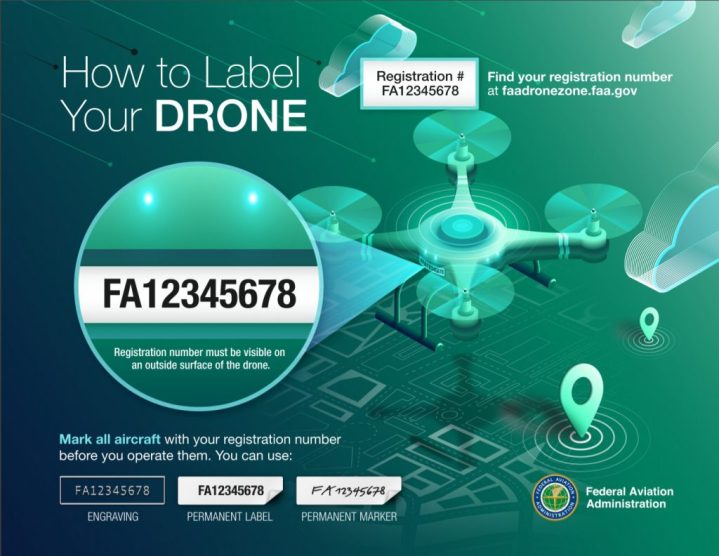
Have you received a drone as a gift or purchased one for yourself? Then you need to register it. As of December 21, 2015, the United States Federal Aviation Administration (FAA) requires all drone users to register their UAVs with the government. Whether or not you agree with it, you are subject to civil and criminal penalties if you do not register. The thing is, the rules aren’t clear-cut, and the requirements differ from drone owner to drone owner. So to help you make sense of it all, we’ve put together this simple guide to help you out.
Before we get to the step-by-step process of how to register, let’s talk about why users are now required to register their drones. Given the number of incidents involving drones (usually as a result of drones being flown in restricted areas, such as near airports or off-limits natural areas) and videos showing drones being outfitted with cameras for spying on the neighbors and prison contraband, it becomes rather obvious. The honor system just wasn’t working. So in an effort to keep the skies clear for manned aircraft, animals, and people, the FAA implemented a registration process to keep track of all consumer-grade UAVs (unmanned air vehicles) and UAV pilots.
Let’s start with the basics:
- There is a $5 registration fee.
- If you are caught flying an unregistered drone, you will be fined. These fines can be steep, reaching $27,500 for civil penalties, and up to $250,000 with the possibility of 3-years jail time for criminal penalties.
- Pilots under 13 years of age must have a parent or guardian complete registration for them.
- All drones heavier than 0.55 pounds need to be registered. Anything lighter than that is exempt from registration requirements.
Once you’ve identified whether your aircraft meets the registration requirements, you’ll need to begin the registration process as outlined below.
- The first thing you’ll need to do is go to FAA’s DroneZone website and log in using your existing account credentials.
- If you are a new drone owner, you will have to create an account by going through the standard account creation procedures, using your email to create an account name, inputting a case-sensitive password with special requirements, and verifying your email address.
- Once your account has been created, you will be prompted to select your registration type. There are two registrations options for drone owners. One is to fly under Part 107 which allows for both recreational and commercial flying. If you choose to fly commercially, you must pay $150 and pass a pilot certification test, while recreational owners only need to pay $5 and follow the rules for recreational flying. Section 365 is another registration option for people who fly recreationally as part of a model aircraft club.
- Fill out your various profile information, including your full name, mailing address, and physical address. You will also have to agree to the FAA’s safety guidelines, but given how serious the consequences for drone misuse can be, it’s wise to familiarize yourself with that information.
- The final step is to provide your credit card information in order to process the $5 registration fee.
When you’re done, the FAA will provide you with a unique 10-digit registration number. As of February 25, 2019, all drones you own and fly must be marked with this number in a visible location prior to using them.

You will also receive an email containing a certificate confirming your registration. We recommend that you print the certificate in case you ever need to provide further proof that your drone is registered with the FAA.
Editors' Recommendations
- Parrot’s 4G-connected Anafi Ai drone is the Google Maps car of the skies
- Sony built a drone that’s beefy enough to carry an Alpha series DSLR
- New Jersey cops use speaker-drones to help enforce pandemic lockdown
- Mysterious drone tells New Yorkers to socially distance during pandemic
- Cops use drones to shame people flouting lockdown rules




